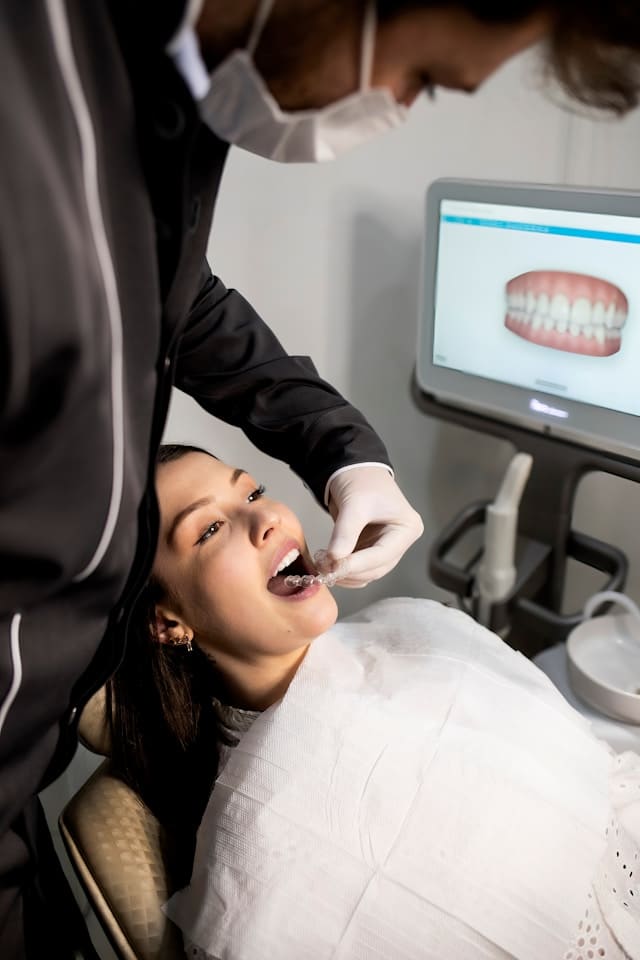Can Silver Diamine Fluoride (SDF) Be an Effective Treatment for Childhood Tooth Decay?

Implementing effective dental health care from an early age is crucial for a child’s overall health. Prevention and treatment of tooth decay is a primary concern for pediatric dentists, and recently, a new player has been making waves in the field of dentistry: Silver Diamine Fluoride, often abbreviated as SDF. SDF has emerged as a potential game-changer in the fight against childhood tooth decay and cavities, but is it truly effective? Let us delve deeper into this topic and discuss the potential benefits and limitations of using SDF in pediatric dentistry.
Understanding Silver Diamine Fluoride
Before assessing the effectiveness of SDF, it’s essential for you to understand what it is and how it works. Silver Diamine Fluoride is a topical substance that contains two active components: silver and fluoride. The silver acts as an antimicrobial agent, killing bacteria that can cause decay, while fluoride helps to protect the teeth by promoting remineralization and preventing the formation of cavities. Together, these components work to halt the progression of existing tooth decay and protect against further decay.
In the same genre : How Can Companion Robots Alleviate Feelings of Isolation in the Elderly with Mobility Issues?
SDF has been used in other countries for decades, but it was only approved for use in the United States by the Food and Drug Administration (FDA) in 2014, and its use is steadily growing in popularity. Pediatric dentists apply SDF directly to the child’s teeth using a small brush, making the application process quick, non-invasive, and painless.
SDF and Childhood Tooth Decay
Tooth decay is a significant health concern in children, and finding an effective solution is paramount. According to the American Academy of Pediatric Dentistry, tooth decay, or dental caries, is the most common chronic disease in children. Left untreated, tooth decay can lead to pain, infection, and can affect a child’s ability to eat, speak, and learn. Traditionally, the treatment of dental caries involves removing the decayed tooth tissue and filling the tooth, often requiring injections and drilling which can be frightening for children.
Topic to read : What Are the Benefits of Reflexology in Managing Chronic Headaches?
SDF presents a different approach. It has been shown to be highly effective at stopping tooth decay in its tracks. In fact, according to a study published in the Journal of Dental Research, SDF was found to halt the progression of decay in primary teeth in 81% of cases. This is a significant finding as it allows decay to be treated quickly and painlessly, without the need for more invasive procedures.
Evaluating the Benefits and Limitations of SDF
From an effectiveness standpoint, it’s clear that SDF has a lot to offer. However, like any treatment, it also has its limitations and is not suitable for every case.
One of the main benefits of SDF is that it’s a non-invasive treatment. This means it’s a great option for young children who are fearful of dental procedures, those with special healthcare needs, or those who cannot tolerate more traditional methods of treatment. SDF is also cost-effective, making it a more accessible option for families who may struggle with the cost of dental care.
The primary limitation of SDF is that it turns the decayed areas of the tooth black. This staining is permanent and can be a significant aesthetic concern, especially for front teeth. Additionally, while SDF can stop the progression of decay, it does not restore the loss of tooth structure. Therefore, in cases of advanced decay where the structure of the tooth is compromised, more invasive treatments may still be necessary.
The Role of SDF in Preventive Dentistry
While the focus has been primarily on the treatment aspect of SDF, it’s important to consider its role in preventive dentistry. The fluoride component of SDF not only aids in stopping decay but also in preventing the formation of new cavities. Regular application of SDF can therefore be a part of a comprehensive preventive dental health care plan for children.
It’s important to remember that SDF is not a standalone solution. Good oral hygiene practices, including regular brushing and flossing, balanced nutrition, and regular dental check-ups, are still essential for maintaining good dental health. In addition, the decision to use SDF should always be made in consultation with a pediatric dentist, taking into account the child’s individual needs and circumstances.
In conclusion, Silver Diamine Fluoride represents a promising tool in the fight against childhood tooth decay. Its effectiveness combined with its non-invasive nature makes it an attractive option for both treatment and prevention. However, as with any dental treatment, it’s important to consult with a dental professional to determine if it’s the right choice for your child.
The Practical Application of SDF in Pediatric Dentistry
Within the realm of pediatric dentistry, Silver Diamine Fluoride (SDF) is gaining recognition for its simplicity and efficiency. The application of SDF is straightforward and non-threatening to young children, making it a viable option for pediatric dentists.
A typical SDF treatment includes a thorough cleaning of your child’s teeth, followed by applying the SDF solution with a small brush. This process is quick, with the entire application often completed in under five minutes. Because the treatment is non-invasive, it doesn’t involve any painful procedures such as injections or drilling, making it a less traumatic experience for children.
Moreover, the treatment is not a one-time fix. For the best results, SDF treatment should be done bi-annually. This recurring application of SDF helps ensure that carious lesions are kept at bay, and the ongoing protection is provided against tooth decay.
However, it’s important to note that SDF is not a magic cure-all. It is a tactical tool in combating tooth decay, but it cannot replace the importance of regular oral health care routines. Encouraging your child to maintain good oral hygiene habits like regular brushing, flossing, and dental check-ups is pivotal to their overall dental health.
Addressing the Stigma: The Aesthetic Concern of SDF Treatment
A significant concern that arises from SDF treatment is the aesthetic effect it has on the baby teeth. The SDF treatment reacts with the carious lesions, causing them to turn black. This discoloration is irreversible, and can often be a deterrent for parents considering SDF treatment for their children.
While this is a valid concern, it’s important to view this issue in the broader context of oral health. The primary purpose of SDF is to prevent further tooth decay and alleviate any associated pain or discomfort. The discoloration is a small price to pay for the significant benefits that SDF offers in combating tooth decay.
Furthermore, the discoloration only occurs on the areas where the decay was present. It does not affect the entirety of the tooth. Also, since SDF is typically applied to baby teeth, the discoloration will be gone once those teeth naturally fall out and are replaced by the permanent teeth.
Conclusion: The Future of SDF in Pediatric Dentistry
In the context of pediatric dentistry, Silver Diamine Fluoride offers a compelling solution to the prevalent issue of tooth decay. Its ease of application and scientifically-backed effectiveness make it an appealing option for both dentists and parents. While the aesthetic effect of blackened teeth can be off-putting, the benefits that SDF provides in terms of oral health far outweigh this temporary issue.
However, it’s imperative to remember that SDF is a tool and not a replacement for good oral health practices. Regular brushing and flossing, a balanced diet, and routine dental check-ups are foundational to a child’s dental health, with SDF serving as an additional line of defense.
As we look forward, it’ll be interesting to see how SDF becomes further integrated into pediatric dentistry. If more clinical trials continue to verify its effectiveness, we could see SDF becoming a cornerstone of preventive and restorative dental care for early childhood. It’s a promising step forward in our collective fight against tooth decay.
